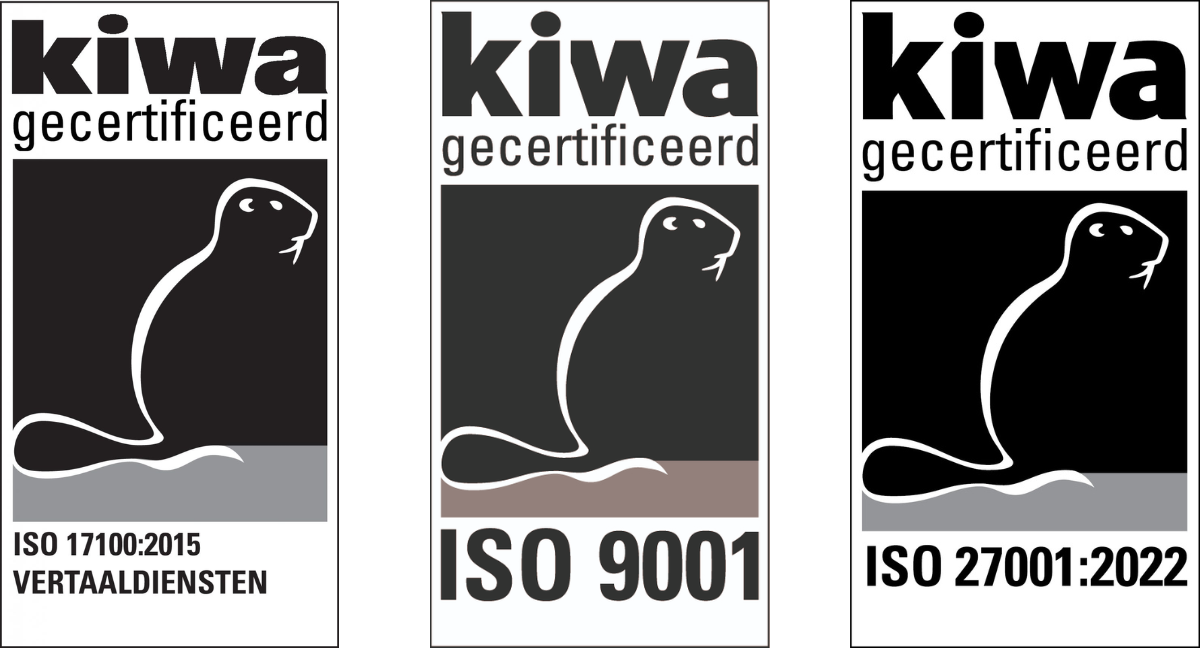Blog
- Information directly from the translation industry
- Advice from experts
When I wrote the blog ‘A look behind the scenes’, I added (part 1) to the title. This is because the translation world is full of stories that are worth telling. And not unimportantly, these stories can improve the mutual understanding of the parties involved in a translation process. The better the parties know each other, the better they can respond to one another. Now all we need is the time to write down all these stories.
In an ideal world, clients provide Word or Excel files. The translator then creates a copy of that file for translation so that the format and fonts stay the same. After this, the translated document can be sent back to the client without any further processing. Easy as that.
It is understandable that clients cannot always provide everything in Word or Excel files. We have to make do with what we have. Fortunately, we have skilled desktop publishers with computers full of programmes that can convert documents with unusual file formats into files the translators can work with.
With the commonly used PDF format, that conversion is often not sufficient. There is often an additional obstacle in the form of uneditable texts in the document. Only PDF files that have been created under certain circumstances have texts that can be edited – with special programmes – later. Unfortunately, most PDF files are not of this type, which means a text recognition programme must first be used before the document can be converted into a different file format.
Unfortunately, text recognition and conversion programmes are not good at dealing with a document’s layout, so by the time the translator goes to work on the text, the layout often doesn’t look quite as good as it should. This means that after the translation process, the desktop publisher must go to work to restore this.
But it could always be worse. Sometimes, a client has no other option than to fax their documents. They only have a paper version of the documents to be translated, there is no scanner nearby, and mailing the documents will take too long. And… they are in a big hurry.
Okay, that’s just how it is. The client is in a tight spot because they were asked at the last moment to arrange for a translation in connection with an important meeting that has suddenly been pushed forward.
Now, a fax machine is a great device for quickly transferring texts. Unfortunately, the result is quite blurry and coarse compared to scanned documents. And if the texts are small, text recognition programmes have trouble recognizing those grainy letters; the distinction between a 1, an l, an I and a ! disappears, the letter combination ‘rn’ becomes an ‘m’, etc., etc. And if the document also has a complex layout with pictures, charts and diagrams, and the fax came through slightly skewed, then the result looks horrendous. Moreover, this is a rush job.
The situation described above is a good example of a 24/7 relay race we regularly get caught in. In this case, the desktop publisher converts the faxed documents to Word documents as well as possible and sends them to the translator with a scan of the faxes. This means the latter has some additional work; they must separate the blurred texts and mutilated words before they can finally deploy their translation software.
Once the translator is finished, they send the translation – perhaps in the dead of night – back to the desktop publisher, who stayed up to immediately work on the layout with a large mug of coffee at the ready. In most cases, we also have a proofreader carefully check the final result. By the time the order is sent back, the sun is rising again. Once the client has indicated that everything has been received in good order, the translation, desktop publishing and proofreading crew can go to bed.
The example above described a relatively small order that only needed to be translated into one other language. But things can be far more complex than that.
Enough for now. Look forward to part 3. Let me conclude with the remark that the translation world, despite all of its suddenly emerging complications, is very fascinating above all. Never a dull moment. Besides, we are not afraid of those unexpected obstacles along the way!

Translation Agency complies with the highest attainable certifications: ISO 9001:2015, ISO 17100:2015, and ISO 27001:2022. Top quality, security and service remain our number one priority.


Translation Agency is a member of the VViN and EUATC; Organisations of translation agencies that work together to optimise quality and service.
